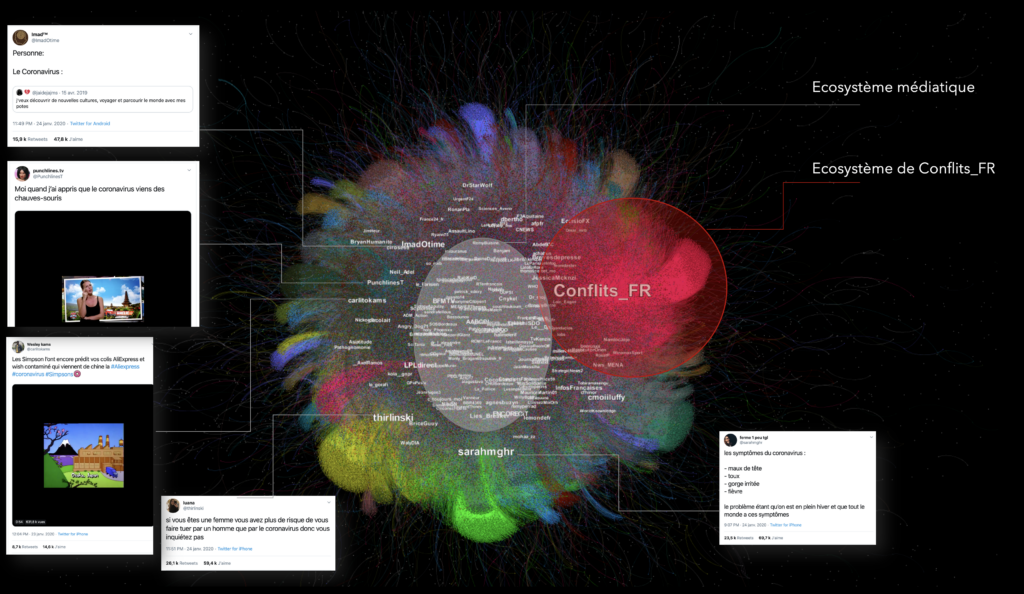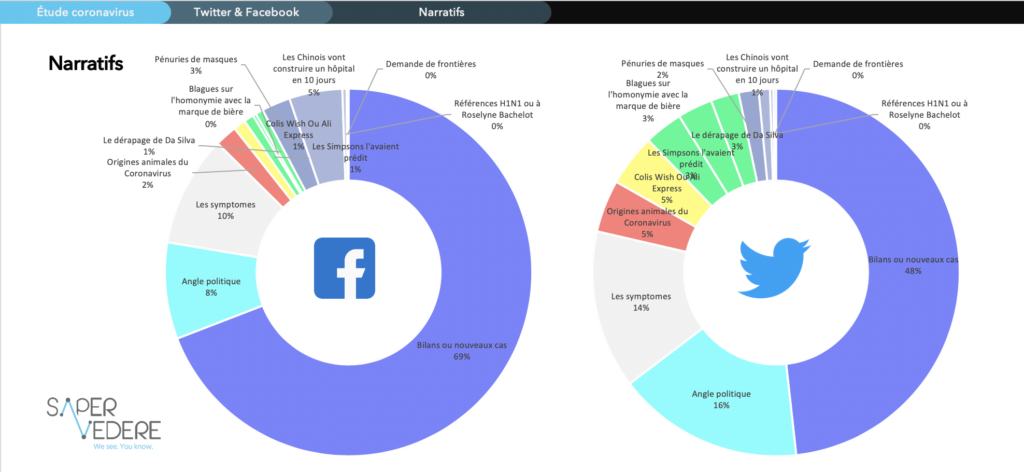Sommaire
Analysis of the spread of the coronavirus on social media
It had been a while since I looked into the spread of a crisis. The Coronavirus was the perfect opportunity to do so and capture the reactions of digital crowds to the arrival of a virus and its reception.

Analysis conducted using Brandwatch software and data.
From international reactions to humorous comments, including media coverage.

On Twitter and Facebook, we observe three distinct phases:

- Specialized relay phase: The "kilometer law," which states that people are only interested in what's close to them, applies here. There were very few publications before the virus reached France.
- Media phase: The first cases in France triggered significant media coverage.
- Commentary phase: This is when everyone starts trying to come up with the funniest joke.

The account @conflits_fr gained significant attention, closely following the topic and receiving numerous retweets on its posts.
On Facebook, traditional media ecosystems dominate, along with a notable contribution from satirical websites:

Few narratives outside of media statements.
By filtering through keywords (with some margin for error due to potential biases), we realize that the narratives circulating on social media are mostly aligned with media terminology, with a strong focus on the announcement of new cases and updates from China.
This trend is even more pronounced on Facebook (logically, as the corpus consists of public pages), while the political angle (political criticism, government attacks, etc.) is more present on Twitter.

There is also very little differentiation in the opinions shared:

Limited impact of official communications
The French authorities' communication struggled to make an impact in the discussions. The only statements were made through the official accounts of the Ministry and the Minister, but lacked any strong messaging.
As a result, the authorities were not prominently featured among the leading accounts in terms of information. This was likely due to the limited activity (perhaps intentionally, to avoid making it a huge topic) and the mostly metalinguistic nature of the posts (e.g., "Agnès Buzyn will speak," "Here are the ministry's recommendations").
Minimal disinformation or conspiracy theories
While some political opportunism (criticisms of measures, calls for reinstating borders, etc.) was present, a deeper analysis of the tweets reveals very little, if any, conspiracy theories circulating on social networks.
The only uncertainties revolved around the origins of the virus, with bats or snakes being blamed, and a rumor from the British press about a mysterious lab from which the virus may have escaped.
This narrative was imported by the account @TPrincedeLamour.

That's the current summary of the comments about the coronavirus on social media!



